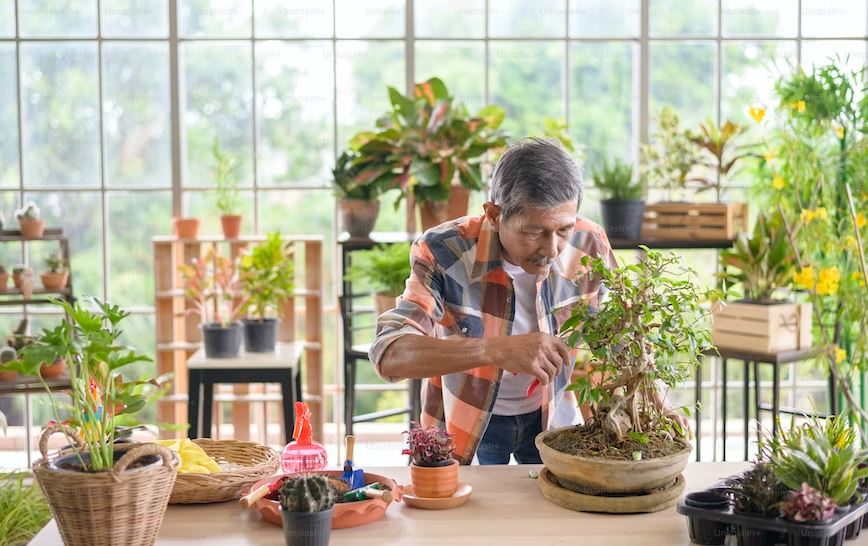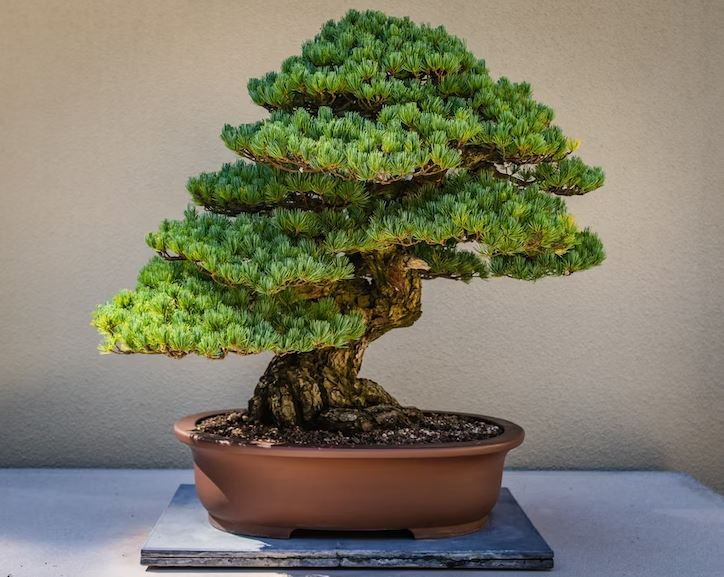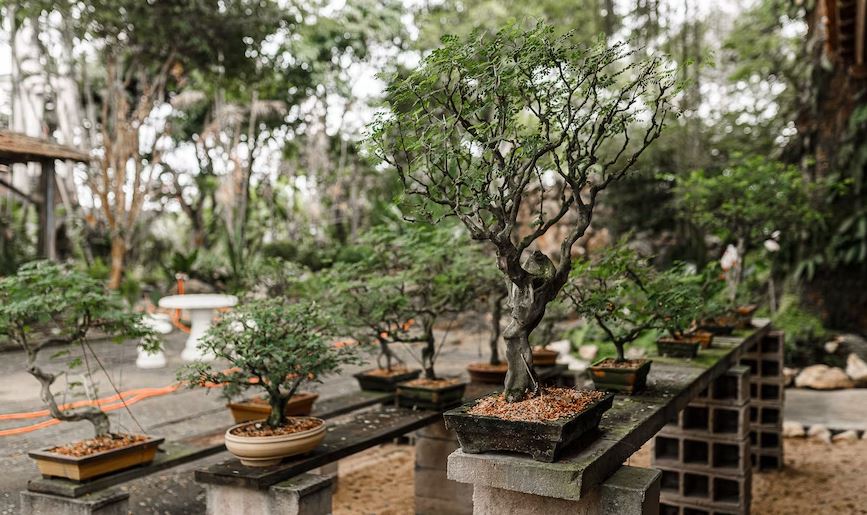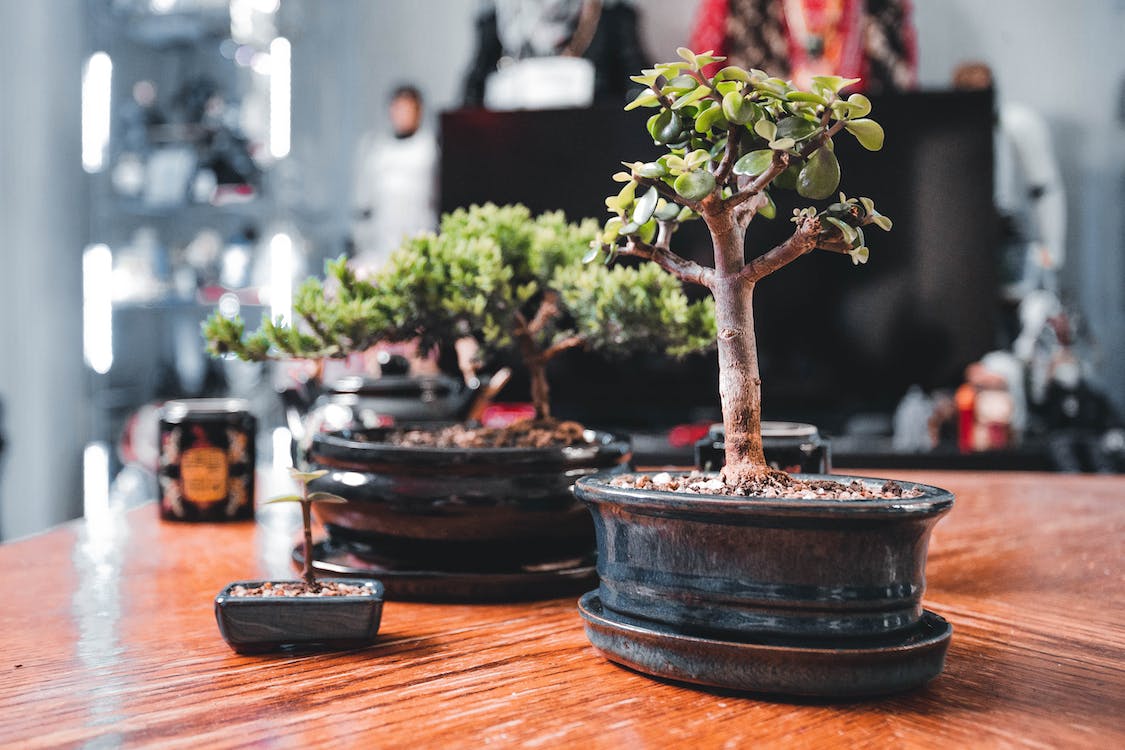Bonsai trees are known for their mesmerizing aesthetic appeal, but besides their ornamental value, bonsai trees have become a popular hobby amongst gardening enthusiasts. The practice of growing bonsai trees has become a meditative and rewarding pastime, and it’s easy to see why so many people are considering bonsai trees as a hobby.
What is Bonsai?
For those who may not know, Bonsai are trees and plants that are grown in pots in a way that makes them look even more beautiful than they do in the wild. The term “bonsai” refers to the art of cultivating trees in miniature form, often designed to replicate the image of a full-grown tree. Bonsai trees are an ancient tradition that originated in Japan for aesthetic purposes, but it has since spread worldwide to become a popular choice for gardening enthusiasts.
History of Bonsai
Bonsai is an ancient Japanese art form that involves growing small trees in tiny pots. The goal of the practice is to show a smaller version of a full-size tree in nature.
The term “bonsai” was first used in a poem written in the mid-14th century, while older bonsai culture may be traced on pictorial scrolls dating back to 1309. It gained popularity three centuries later, during the Edo era (1603-1867).
Bonsai was originally loved by nobles, priests, and other high-ranking individuals, but commoners began to enjoy them in the Edo era (1603-1867). Later, during the Meiji period (1868-1912), bonsai became valued as works of art. Individuals began cultivating bonsai not just as a pastime but also as an artistic endeavor. Large-scale bonsai exhibits, as did scholarly literature on growth procedures, began to appear.
Types of Bonsai
Bonsai may be made from any tree or plant. A bonsai is essentially any plant that can be grown in a tiny container. The most common kinds are shohaku pines, maples, whose leaves change color in autumn, blooming trees such as cherry and plum, and fruit-bearing trees such as quince and persimmon. Varieties that are most suited to the local climate are used in countries other than Japan. The trees can grow as tall as one meter or as little as one’s palm.
There are various basic bonsai styles:
- Chokkan-style bonsai trees have vertical trunks and symmetrical branches that extend to the left, right, front, and back.
- Shakan-style trees have slanted trunk that leans to one side.
- Moyogi-style trees have curved S-shaped trunks.
- Fukinagashi-style trees are sculpted by high winds, with bent trunks and branches growing in one direction.
- Kengai-style trees are found in regions with steep slopes, such as cliffs.
All bonsai trees have a shape that works best for them, but the most important thing to remember is to let the tree be itself and not try to force it into a certain shape. Instead, you should help the tree find its most beautiful, balanced shape.
Choosing containers that best suit the trees in size, shape, and color, just as people choose clothes that make them look good, allows the bonsai to be seen in the best light.
Is Bonsai an Expensive Hobby?
Incredible works of art may be found everywhere. Undoubtedly, there is nothing more tranquil, soothing, and sophisticated than a bonsai tree. These little trees will capture your attention immediately. Have you ever wondered if bonsai is a costly pastime?
The quick response is “yes,” but the cost is measured in more than just money. The investment of time, focus, effort, and persistence required to succeed at this pastime is the true cost. There are also substantial costs, although they may be reduced.
Growing bonsai trees is a highly satisfying and enjoyable hobby. If you’re interested in this field, discover the details of bonsai as a hobby below.
How Expensive is Bonsai?
Growing bonsai trees is often considered an expensive hobby. However, there is much more to it than what appears on the surface. The art of cultivating bonsai is a voyage that often entails expenses that go beyond monetary value. It requires a significant investment of time, effort, and perseverance.
First, we must understand the fundamental reasons for high expenses to evaluate the cost. There are two techniques to grow and gather bonsai trees:
- From seed or seedling collected naturally
- From fields or nurseries where Bonsai is grown
Both of these instances involve different levels of expenses. Seeds or saplings can be collected from anywhere, whether it’s nearby or from a distant location. Bonsai seeds are not different from other seeds, hence there is no distinction. Collecting trees is commonly regarded as a fundamental aspect of the hobby, which is referred to as Yamadori.
However, collecting special and unique varieties of bonsai requires meticulous attention. The rare species of trees are typically located in hard-to-access areas such as high cliffs, jungles, and other challenging terrains. Consequently, the cost of these seeds has escalated significantly.
In addition, acquiring trees from nurseries can become quite costly. The field-grown trees may not have been collected from distant locations, but they still require a significant amount of resources.
The art of keeping Bonsai trees small, indoor-friendly, and beautifully shaped is what makes them unique. Creating this living, breathing piece of art requires a great deal of commitment and effort.
Daily care, watering, nourishment, and sufficient sunlight are essential for its growth. These trees are quite costly to purchase due to the significant amount of time and effort invested in their growth.
Despite the upfront expenses a hobbyist like you must budget for, much more builds up over time. For example, the cost of delivering a tree is four times as expensive as the tree itself. You will have to pay for additional supplies like pots, tools, fertilizers, etc.
This time-consuming process might cost more money than intended. Bonsai are prone to mold and illnesses just like any other plant. Despite how delicate they are, taking the right steps right away is essential. These ailments make it quite likely that the treatments will be costly.
Even with such costs, knowledge, dedication and perseverance in this activity are undoubtedly the most important components of bonsai cultivation. Because of this, you may start this activity without spending a fortune.
You might begin by gathering seeds near your house for a low-cost workaround. A little bonsai, a basic juniper, may also be purchased. You may save a lot of money by scouring the local department store for basic hardware products like wire tools and trimmers. It’s a cheaper option to purchase pricey tools.
Is Bonsai the Right Hobby for Me?
Having learned about bonsai basics, you might be curious to know if it’s a hobby that interests you. Those who are passionate about their craft share at least three common traits. Let us delve into them.
Bonsai Enthusiasts Enjoy Nurturing Plants
For those who are already adept at gardening or caring for houseplants, bonsai can be a logical progression that allows them to hone their skills and acquire new ones related to this particular pastime.
No worries if you are not a gardener. Success in bonsai is achievable for anyone interested in learning, regardless of their prior experience or lack thereof in plant cultivation. Numerous resources, including this website, can be of assistance.
Don’t be intimidated by the unique care requirements of bonsai. Hobbies are chosen activities that require time and effort for learning and practicing. It’s natural to develop your knowledge and skill with time. In addition, giving appropriate care to every tree is as effortless as caring for other plants grown in containers.
Bonsai Enthusiasts Use Creativity
Bonsai is both an art form and a recreational activity. Practitioners make a variety of pruning, potting, and styling decisions that affect the appearance, development, and health of the plants they train.
Bonsai is no different from most other creative endeavors. As a beginner, you should initially focus on learning and practicing the fundamentals. Then, as your knowledge and skills expand, you will become more confident and creative in your approach to tree styling and care decisions.
For people unsure about their originality and potential for the activity, have faith in yourself! Everyone – yes, everyone – has some level of creativity, according to research. Everybody is creative in some special way, but that creativity occasionally goes unnoticed. There is a place for both and everything in between in the world of bonsai, regardless of whether your unique creative inclination will cause you to select more traditional forms or those that are more avant-garde.
Bonsai Enthusiasts Are Patient
Growing and maintaining bonsai trees require significant care and patience, making it a hobby for people who enjoy nurturing plants. It involves carefully selecting plant species, pruning, wiring, and designing the plant’s layout to resemble a natural tree’s shape. The process of transforming a tiny plant into a visually fascinating tree is both challenging and rewarding.
Benefits of Bonsai as a Hobby
One of the primary benefits of starting a bonsai hobby is the opportunity to slow down, appreciate nature, and find peace in caring for your tree. Bonsai plants are excellent stress relievers. Nurturing and spending time with your bonsai may be relaxing and help reduce stress.
It also fosters a growing feeling of patience, inventiveness, self-confidence, and constancy in your responsibilities. It’s a hobby that requires daily interactions with the tree, from checking its water levels, ensuring it’s receiving the right amount of sunlight and pruning it, which provides a chance to unwind, relax, and clear the mind, all while creating something beautiful.
Growing bonsai trees benefits both the owner and the surrounding community. It creates a positive ambiance around the house. It becomes a member of the family as an indoor plant.
A plant can filter the air in your home. The more greenery you have around you, the more oxygen you have at your disposal. Bonsai plants may also maintain indoor humidity. Sore throats, dry skin, and coughs are less likely to affect you and your family when humidity levels rise.
Additionally, bonsai trees are a fantastic decor accessory that is versatile and can be displayed in various settings, both indoors and outdoors. They can create a beautiful garden display or decorate a tabletop or windowsill in your home, adding sophistication and a touch of nature to your space.
Overall, the presence of a bonsai tree directly impacts the home’s general well-being. It allows you to develop a sense of belonging in your household while still growing as an individual.
Conclusion
Bonsai is a hobby that has a rich history and can be practiced successfully by almost anyone, providing a sense of fulfillment. Bonsai trees require dedication, focus, and patience. It also requires using particular tools and acquiring specific techniques that are easily attainable for most individuals. Bonsai can provide an opportunity to gain knowledge about plant life and its maintenance, explore your artistic side, and bring a sense of tranquility to your daily routine.
The rewards of having a miniature plant imitating a full-grown tree are worth the effort. If you are looking for a new hobby to challenge yourself and enjoy nature’s beauty, a bonsai tree may be the perfect choice. Not only will you find a new way to express your creativity, but you will also have the privilege of nurturing a living thing and watch it grow into a beautiful work of art.







